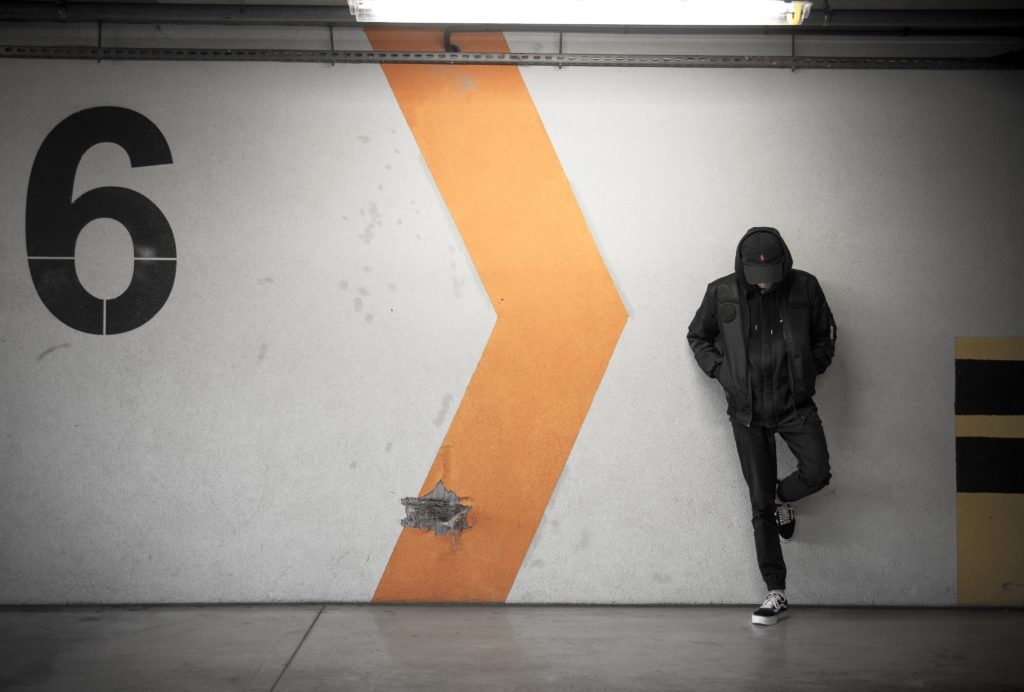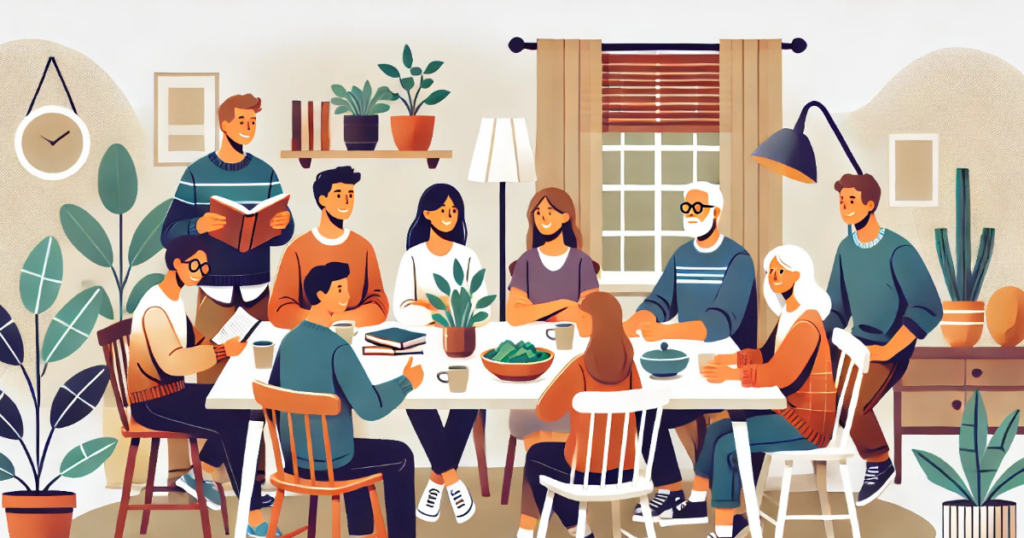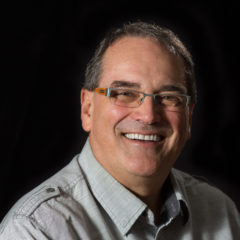The day of my “Macedonian call” experience started off as an ordinary day.
I left my office driving to an appointment. At that time I was serving as the lead pastor of an 85-year old church in Seattle that was in decline, and we were prayerfully wondering how to regain our influence in our city.
As I was driving down a busy boulevard, but when I drove into a certain neighborhood fifty blocks south of our church campus something strange began to happen. It seemed like rose-colored glasses came over my eyes, I became aware my heart rate was slowing, and life around me shifted into slow motion.
I actually wondered if I was getting sick. But six blocks later the feeling went away. I shook it off and continued toward my appointment. [social_warfare]
Some weeks later the exact same thing happened again, at exactly the same intersection. Then a few days later it happened a third time in the same place. That time I pulled my Jeep over to the curb and said out loud, “Lord, what is happening here?”
Now, I am a practical man and am not given to deeply spiritual interruptions. That is probably why it took me three times to realize the Spirit was trying to focus my attention on a particular people in a particular place. But now my heart was paying attention.
As I sat there in my vehicle, I felt the Lord direct my eyes to different groups of people who were hanging out on the sidewalks. Although it was a weekday, many were leaning up against walls just watching traffic, others were seated alone on outside tables but not drinking a purchased drink, and still others were walking slowly and painfully down the sidewalk at a pace that indicated they had no place to go.
It was at that moment the Spirit helped me see a number of people who had previously been invisible to me. On this day I saw them – the isolated and invisible neighbors. After taking in the sidewalk view for a few minutes, I heard myself utter, “I wonder who does church for these people?” That question would soon change my life.
Identifying the Invisibles
Many church leaders live in a middle-class world. Our churches are filled with the middle and upper crowds, we live in suburban neighborhoods, and we inherently assume that most of America is a middle-class nation.
And yet, there are huge portions of the populations in our towns that are not experiencing the comforts of sustainable incomes and welcoming families. It takes a work of the Spirit and probably an intervening event to take the “middle-class” glasses off of our eyes so we can see the isolated people who are all around us.
Jesus worked hard at helping his disciples see people through new eyes. In Mark 6:34 he directed them to see and have compassion on the many people who were milling around them who were like sheep who had no shepherd. In Luke 5:32 he said that he had not come for those who were doing well, but for those who knew they needed a physician. These were all efforts on the part of our Lord to direct our eyes to the isolated and invisible people who were discomforted and whose lives needed someone to help. Jesus unapologetically walked past crowds of people who were doing fine to instead pour himself into the lives of the sick, the poor, the isolated, and the discomforted.
The sick and the financially challenged are not the only invisibles in these neighborhoods. The single population that have enough money to make ends meet, but who do not have anyone who calls them family also feel estranged when they walk up to our “family churches”.
Zacchaeus is an example of this kind of person. He had plenty of money, but was alone on the earth because of his job under the Roman government. Jesus recognized his isolation. Afterall, not many wealthy men in expensive clothes climb tree’s just to get a look at someone. Of course Jesus called him down and went to his house for dinner.
The ministry generation before us used to talk about looking for the “down-and-outers” and the “up-and-outers.” This was their way of reaching for the same kind of people that Jesus primarily reached for. The isolated and invisible populations know that they are isolated and invisible; they are the ones who know they need a physician. Present day leaders who are directed by the Spirit to develop an eye for the isolated populations will find them at both ends of the socio-economic ladder. A great leadership question to ask is: Who are the sick, who are the financially challenged, and who are the lonely people in my town? How many live in your town?
The Isolated Third
Some towns are obviously filled with isolated populations. However, most city planners design their boulevards to hide the sore neighborhoods from the rest of the town. They are not doing a bad thing; they are just paid to design their cities to look as good as possible. However, in the majority of US cities it is possible to drive from one side to the other and never see the challenged population. The thoroughfare streets are lined with nice businesses and boutiques, while two blocks back are neighborhoods where people are crammed into small rundown houses, old apartments, and where rusty RV’s line the curbs with people living in them. When some of them dare to drift out to the nicer boulevards, they are invisible to the rest of the people on those sidewalks who simply have no vision for where they live or the challenges that flood into their lives every day.
So how many isolated people in our towns? It is time for a reality check on this point. Every town has an upper-third of the population that lives in nice houses, many in gated communities, and they enjoy more income than they need to live comfortably.
Every town also has a middle-third of the population that lives in average houses, and have just enough income to make the bills. But every leader needs to acknowledge the presence of the other third. These are the lower-third neighborhoods that are comprised of lonely people living in apartments buildings, trailer parks, senior living units, and even some rundown houses with rusted RV’s parked out front. These are the places in each town where the elementary schools are forced to offer free-and-reduced lunches to many of the children.
These neighbors do not have enough income to pay for their lives, and if they do they have no family to share it with. Although most in the town seldom drives down these streets or identify these neighbors as a significant part of their populous, they make up many of the neighborhoods in every town in America.
Even the nice, rich cities and resort towns have a lower-third stratum within their city limits! Within two blocks of almost every church in America there is a neighborhood that is filled with significantly more isolated and invisible neighbors than the congregation probably notices.
Within two blocks of almost every church in America there is a neighborhood that is filled with significantly more isolated and invisible neighbors than the congregation probably notices.
Tweet this.
Why Invisible People Don’t Attend Our Church Gatherings
Isolated and invisible neighbors do not attend our nice worship gatherings for the same reason they do not shop at the nice boutique on the boulevard – it does not match their sociology. Most of our buildings are quite nice; most of our weekend gatherings are filled with nice families in nice clothes. Further, most of our churches assume everyone there has already eaten and the basic financial needs have been taken care of.
But that is not the world the lower-third inhabit. Even if they can work up the courage to walk into a worship gathering with their unwashed Value Village clothes on, they find it difficult to listen to six songs and a 30-minute sermon while they are worried about what their children will eat that night or how they will make rent on Monday and avoid having to move back into their car again.
We tend to think that lonely and isolated people should pour into our churches to let us be their family. And though most congregations’ work hard at being welcoming, the “invisibles” still feel they do not fit. They walk into our family environments, see all the nuclear family units that are constantly paraded before them and catered to in every assumption of worship gatherings and age-based programs, and they quickly conclude, “these are not my people.” And they walk out as lonely as they walked in.
For these reasons and many more, most of our traditional worship gathering simply do fit the sociology of the isolated and invisible populations that live only a “football field” away.
Most of our traditional worship gathering simply do fit the sociology of the isolated and invisible populations that live only a 'football field' away.
Tweet this.
Becoming “Sent” to the Isolated
Once we get our eyes open to the large numbers of invisible neighbors that live around us, things start to change. And once we admit how poorly our way of doing church fits the isolated population’s realities, things really start to change. There is one more hurdle churches must jump before the invisible neighbors will be reached – Christians must feel “sent”! It is one thing to invite isolated people to come to our church; it is a very different thing to be sent to an isolated people and do church for them in a way that fits their sociology; the latter approach is only accomplished by people who feel “sent” by the Lord.
This is what was happening to me in the front seat of my Jeep; my eyes were being directed to notice the isolated people in my town, and I was being “sent” to them by the Spirit. It was nothing short of a spiritual encounter. It was my own version of a Macedonian Call. And as it turns out, Macedonian Calls are still happening, and are still waving Christian into the invisible and isolated people-groups that live within the shadow of our steeples.
Are you ready to start a fresh expression for the isolated people in your city? Check out the new DinnerChurch.com, an approach proven to reach this important segment of our communities.


